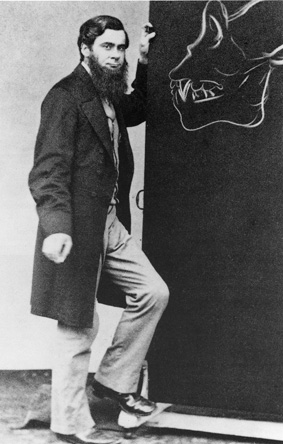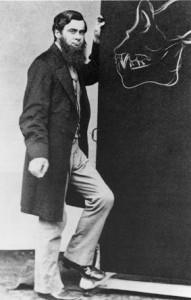
What separates humans from other animals, including our closest relatives?

It’s one of those big questions perennially posed by the evo-curious public. But until recently I seldom gave it much thought. Mostly because the answers tend to get hung up on one trait that differs from our closest great ape relatives: our upright stance, the shape of our toes, the size of our brains.
Millions of years of separate evolution has, of course, resulted in considerable divergence in all manner of traits. It makes no sense to elevate one particular one to some kind of special status – the one thing that makes humans … human.
Questions about what separates us from other animals also carry some unfortunate baggage. The belief that there is something inherently special about humans and the way we arose is more suited to creation mythologies and religious doctrine than to a scientific, testable view of the world. The notion of special creation, and those perversions of evolutionary thinking that defend humans as exceptions, tend to come pre-fitted with taxonomic chauvinism of the following sort:
Let us make man in our image, after our likeness: and let them have dominion over the fish of the sea, and over the fowl of the air, and over the cattle, and over all the earth, and over every creeping thing that creepeth upon the earth.
Victorian clash of minds
The shard of evolutionary thought that most gets under the skin of religion is the notion that humans are not created special, are not made in any divine image. Darwin’s contemporary, the great anatomist Richard Owen, fiercely defended humanity’s paragon status and the Victorian English status quo from transmutationalism (as evolutionary thought was then known) and the bestialisation of man.
When the first pelts and skulls of a large newly discovered “indescribably fierce” African ape (the gorilla) sensationalised 1850’s London, they piqued the curiosity of a working class then challenging ideas of human uniqueness and a divine social order. Owen lectured the British Association in 1854 that human brains bore special structures – such as the hippocampus minor – lacking in apes. Here, Owen claimed, lay the evidence for human uniqueness.
A young Thomas Henry Huxley located the gorilla’s hippocampus minor (remember they were working with skulls) in March 1858 (months before the Darwin-Wallace paper on natural selection), showing himself the better anatomist. More important, Huxley’s interpretation that chimps, gorillas and humans are at least as similar to one another as any is to baboons – now common knowledge – devastated Owen’s claims to human uniqueness.
One by one, all claims to human uniqueness have similarly fallen aside. For example, in 1960 Jane Goodall, refuted the idea that human tool use set us apart from our closest relatives. Perhaps the entire enterprise of looking for traits that distinguish us from other apes is misguided and the differences are more quantitative than qualitative?
Mind the gap
Last month I enjoyed the pleasure of discussing this topic with UQ’s Professor Thomas Suddendorf at the Sydney Writers Festival. Suddendorf was at the festival to talk about his book The Gap: The science of what separates us from other animals (Basic Books) recently published to enthusiastic reviews.
The Gap tackles the difficult question of what separates humans from other animals, but part of its genius is the way it begins by putting humans into a biological context. Only by viewing humans as organisms can we begin to test the idea that humans differ from other organisms, and what those differences might be.
A psychologist, Suddendorf works with both human children and other primates to understand mental evolution and the development of those mental capacities in childhood. The Gap considers in detail the mental traits most likely to have effected the ecological success of humans relative to our great ape relatives. Where orangutans, gorillas and chimpanzees languish in ever-shrinking patches of rainforest, he points out, humans now make up more than seven times the biomass of all other wild mammals combined. Something sets us apart, ecologically at least, from our closest relatives.
After reviewing the current scientific evidence of human and ape capacities in the areas of language, mental time travel (the capacity to imagine the past and the future), theory of mind, intelligence, culture and morality, Suddendorf arrives at the conclusion that across these domains, two major features set humans apart:
Our open-ended ability to imagine and reflect on different situations, and our deep-seated drive to link our scenario-building minds together.
That’s as good an answer to the questions about human uniqueness as I have ever encountered. What is more, the answer, and Suddendorf’s fascinating path to that answer has made the very question of human uniqueness interesting again.
![]()
Rob Brooks does not work for, consult to, own shares in or receive funding from any company or organisation that would benefit from this article, and has no relevant affiliations.
This article was originally published on The Conversation.
Read the original article.